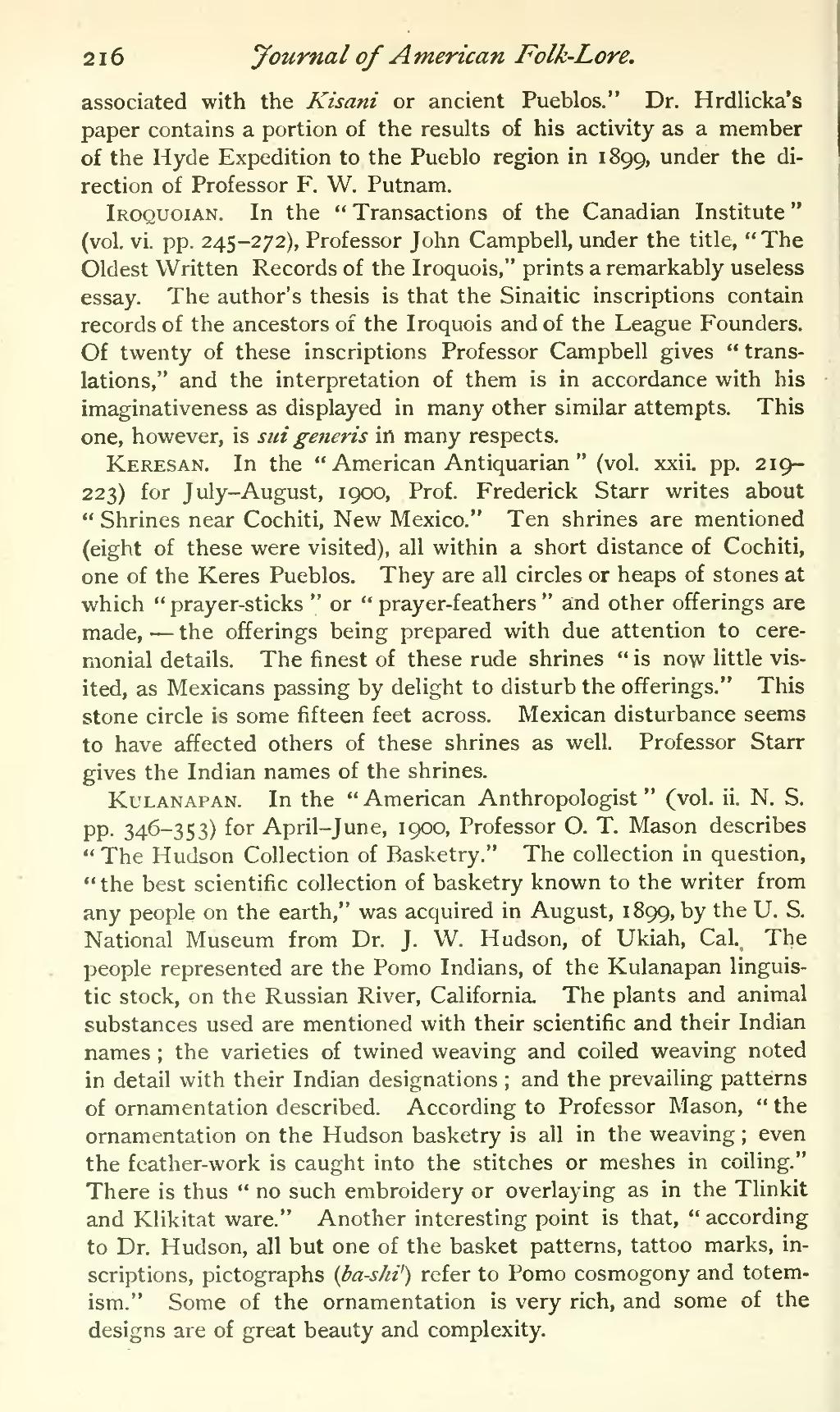2 1 6 Journal of A merican Folk-Lore.
associated with the Kisani or ancient Pueblos." Dr. Hrdlicka's paper contains a portion of the results of his activity as a member of the Hyde Expedition to the Pueblo region in 1899, under the di- rection of Professor F. W. Putnam.
Iroquoian. In the " Transactions of the Canadian Institute " (vol. vi. pp. 245-272), Professor John Campbell, under the title, "The Oldest Written Records of the Iroquois," prints a remarkably useless essay. The author's thesis is that the Sinaitic inscriptions contain records of the ancestors of the Iroquois and of the League Founders. Of twenty of these inscriptions Professor Campbell gives " trans- lations," and the interpretation of them is in accordance with his imaginativeness as displayed in many other similar attempts. This one, however, is sui generis in many respects.
Keresan. In the " American Antiquarian " (vol. xxii. pp. 219- 223) for July- August, 1900, Prof. Frederick Starr writes about " Shrines near Cochiti, New Mexico." Ten shrines are mentioned (eight of these were visited), all within a short distance of Cochiti, one of the Keres Pueblos. They are all circles or heaps of stones at which " prayer-sticks " or " prayer-feathers " and other offerings are made, — the offerings being prepared with due attention to cere- monial details. The finest of these rude shrines " is now little vis- ited, as Mexicans passing by delight to disturb the offerings." This stone circle is some fifteen feet across. Mexican disturbance seems to have affected others of these shrines as well. Professor Starr gives the Indian names of the shrines.
Kulanapan. In the "American Anthropologist" (vol. ii. N. S. pp. 346-353) for April-June, 1900, Professor O. T. Mason describes " The Hudson Collection of Basketry." The collection in question, " the best scientific collection of basketry known to the writer from any people on the earth," was acquired in August, 1899, by the U. S. National Museum from Dr. J. W. Hudson, of Ukiah, Cal N The people represented are the Pomo Indians, of the Kulanapan linguis- tic stock, on the Russian River, California. The plants and animal substances used are mentioned with their scientific and their Indian names ; the varieties of twined weaving and coiled weaving noted in detail with their Indian designations ; and the prevailing patterns of ornamentation described. According to Professor Mason, " the ornamentation on the Hudson basketry is all in the weaving; even the feather-work is caught into the stitches or meshes in coiling." There is thus " no such embroidery or overlaying as in the Tlinkit and Klikitat ware." Another interesting point is that, "according to Dr. Hudson, all but one of the basket patterns, tattoo marks, in- scriptions, pictographs (ba-shi') refer to Pomo cosmogony and totem- ism." Some of the ornamentation is very rich, and some of the designs are of great beauty and complexity.
�� �
